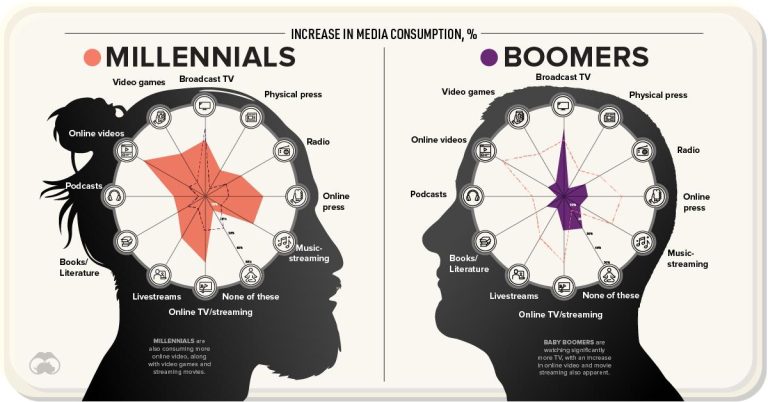Vertical video is moving from social novelty to a central conduit for news, reshaping how audiences encounter breaking stories and daily headlines on their phones. As platforms push short-form, vertical formats and consumers spend more time scrolling feeds than tuning in, publishers are recutting footage, retooling workflows and training correspondents to speak directly to camera in seconds-long bursts.
The shift is altering everything from story selection to verification practices. Newsrooms are designing for the small screen first-leaning on captions, on-screen graphics and rapid explainers-while advertisers follow audiences into Reels, Shorts and TikTok. Supporters say the format meets habits of younger viewers and expands reach; critics warn that speed and brevity can compress context and complicate trust. Either way, the frame of the news is changing-literally.
Table of Contents
- Mobile first viewers shift news habits to vertical as platforms reward native formats and discovery
- Engagement improves with captions native aspect ratios quick motion and hooks that work in silent autoplay
- Newsrooms should adopt vertical workflows rewrite intros for the feed and schedule posts for peak viewing windows
- In Retrospect
Mobile first viewers shift news habits to vertical as platforms reward native formats and discovery
As mobile becomes the primary gateway to headlines, publishers are retooling production for 9:16 vertical, where native uploads outperform link-outs and algorithmic discovery trumps follower counts; newsrooms are trimming scripts for sound-off viewing, leading with on-screen text and subtitles, and optimizing the first three seconds for watch time and completion rate, while packaging explainers for TikTok, Reels, and Shorts as platforms increasingly prioritize in-feed relevance over destination traffic, reshaping distribution, attribution, and monetization strategies in the process.
- Audience behavior: Younger viewers default to full-screen vertical, expect captions, and sample outlets via algorithmic feeds before deciding to follow.
- Format playbook: Face-forward explainers, text overlays, ambient B-roll, and rapid cuts calibrated for sound-off and short attention spans.
- Metrics that matter: Hook retention, completion rates, replays, and shares outweigh click-throughs as signals of editorial fit.
- Workflow shifts: Mobile-first editing, vertical templates, platform-specific cuts, and quick-turn A/B testing of covers and captions.
- Business implications: Less referral traffic to sites, more emphasis on in-platform loyalty, creator-led franchises, and diversified revenue beyond pre-roll.
- Editorial risks: Context compression and misinformation exposure require stricter verification and layered explainers linked across episodes.
Engagement improves with captions native aspect ratios quick motion and hooks that work in silent autoplay
As audiences increasingly encounter news in sound-off environments, outlets are optimizing vertical formats to meet the feed: captioned visuals sustain attention without audio, platform-native framing eliminates letterboxing and misaligned overlays, brisk pacing reduces swipe-away risk, and mute-friendly openings-anchored by text-led teases and expressive visuals-are lifting completion rates and recirculation across short-form ecosystems.
- Captions first: Burn-in, high-contrast subtitles that read like headlines, not verbatim transcripts.
- Native aspect ratios: Master in 9:16; avoid pillarboxing and protect safe zones for graphics and faces.
- Quick motion: Establish context within two seconds using purposeful cuts, zooms, and reframing.
- Hooks for silent autoplay: Lead with on-screen text, gestures, and bold lower-thirds; treat VO as additive.
- Visual hierarchy: Prioritize faces, data cards, and action; keep typography large and mobile-legible.
- Platform fluency: Match caption cadence and visual language to each app’s feed norms to signal “native.”
Newsrooms should adopt vertical workflows rewrite intros for the feed and schedule posts for peak viewing windows
As vertical video becomes a primary gateway to headlines, editors are retooling pipelines to prioritize 9:16 production from pitch to publish, rewriting feed-first intros that hook in under three seconds, and aligning output to audience peak windows verified by platform analytics; the emerging playbook blends desk-level templates, safe-zone framing, burned-in captions for sound-off viewing, and daypart scheduling that clusters releases around commute, lunch, and late-evening spikes-measured not only by views, but by hold rates, watch time, saves, and follow-through.
- Standardize 9:16 layouts, lower-thirds, and caption styles in the CMS; protect UI safe zones and logo visibility.
- Rewrite leads as punchy, verb-led hooks (12-20 words) that state the “why now” in the first line; A/B test two openings per story.
- Cut for time: publish 20-45s explainer clips with burned-in captions; target 70%+ sound-off comprehension.
- Schedule by daypart: morning (7-9 a.m.), midday (11 a.m.-1 p.m.), and late prime (8-11 p.m.) in local time; stagger across TikTok, Reels, and Shorts.
- Instrument analytics: track 3s/10s retention, average view duration, completion rate, and saves; adjust hooks and pacing weekly.
- Pre-build variants (headline-on-frame, quote-first, data-card) so producers can swap intros per platform without re-editing.
- Train on framing for headroom and motion; design shots for thumb-stops (faces, clear action, clean type contrast).
- Automate scheduling via platform APIs and newsroom calendars; enforce embargo windows and geo-target key markets.
In Retrospect
For publishers, the shift is less about chasing a fad than recalibrating for where audiences already are. Vertical video is reshaping newsroom workflows, story selection and on‑screen framing, while raising familiar questions about verification, context and accessibility at speed. Advertising models and measurement are still catching up, and the risk of overreliance on platform algorithms remains, but early returns on reach are forcing even legacy outlets to rethink distribution.
The next phase will test whether vertical video can carry more than headlines and highlights: sustained reporting, live coverage under pressure, and nuanced explainers built for a thumb‑driven feed. With major news cycles ahead and platforms refining their formats, the contest will not be between short and long so much as between habits. For now, the feed is the front page-and newsrooms are learning to write for it.


